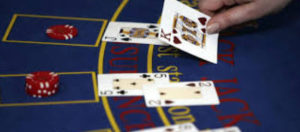
OVERVIEW OF BLACKJACK ODDS AND PROBABILITY
Blackjack is a deceptive game that employs the use of mathematical approach to determine the likelihood of winning or losing. This strategy was published in 1932 by Edward Thorp in a book called “Beat the Dealer“.
About Blackjack Odds and Probabilities
When you are looking for a game of deception, it is blackjack. If you are poor mathematically, you might find it hard to win while playing although it seem simple. It is basically based on probabilities and odds which requires knowledge of mathematics. In 1960s, the realization of this fact struck Julian Braun and Edward Thorp amidst others. The initial strategy of blackjack was refined by publishing a book ‘Beat the Dealer’ by Ed Thorp which was possible through running lot of simulations on ancient IBM computers. The basic knowledge of probabilities and odds in all cases will help a player in winning and making winning decisions.
The purpose of this review is to introduce the basic of the probabilities and odds involved in blackjack. Explanations have been done explicitly here for readers to benefit.
About the probabilities of blackjack
We are taking odds and probabilities separately because they are two different things entirely unlike the missed-up people used to do. Probability is an aspect of mathematics that tell us how likely an evet will occurred and this is needed in playing the game. There is nothing relating to everyone that probability does not reflect on. Calculation is done based on the given information that will not be useful in predicting precisely the event. Therefore, it can be used to predict the best possible moves that will make you win in a game of blackjack. The possibilities will derived from the data available on the number of desired outcomes and the total possible outcomes number. However, players should note that probability is not certain but it will only provide them with the predicted outcome of an event. Probabilities of events are denoted with probability line by statisticians, which is divided into four. The four are, unlikely, likely, certainty and impossibility. The possibility of an event happening which is low will be showcased at the left hand side of the probability line. Alternatively, the right hand side will denoted the possibility of an event happening which is high. To calculate the probability of an event happening, you just need to use the desired outcomes number to divide the total possible outcomes number. Players can relate it to this game by using the number of means of winning to divide the total possible outcomes number.
Independent vs. Dependent Trials
Among the things to note when dealing with probability is dependent and independent events. An event that does not affect the probability of another event happening is known as an independent event. For example, the tossing of dice in crap games and spins. Let us take the probability of tossing two dices with 6 sided face as an illustration of what we are talking about. When you roll a die, the chance of having two is one out of six possible outcomes. Therefore, according to formula for calculating probability, we are going to have one divided by six to give 1.166 (1/6 = 1.166). It can be converted to percentage by multiplying with 100 to have 16.66 percent. However, when we are considering two dices, the total possible outcomes is thirty-six. Then, the probability of having two will be one divided by thirty-six to give 0.027 (1/36 = 0.027) and convert to percentage to have 2.77 percent. This value is constant regardless of the number of times you roll the dice.
An events that affect the probability of another event happening is known as a dependent event. Example of a dependent event is the blackjack game in which the former card will affect the outcome of the next one. Let us take the likelihood of drawing an ace out of one deck of cards to illustrate a dependent event. There are fifty-two cards in a single deck blackjack in the absence of jokers therefore containing only four aces. The probability of taking out an ace out of the fifty-two cards will be four divided by fifty-two to give 0.0769 (4/52 = 0.0769). Then it is converted to percentage to give 7.69 percent.
Illustration of the likelihood of winning in blackjack after less cards remain on deck
After the single deck blackjack game the card will be shuffled again to beginning another one. Let us consider the probability of how your total will improve after the first hit. With the first hit being a case in which you cannot surrender and the dealer is having K while you have Q-6. Then you have no other choice than to hit the hard 16. Three cards is no longer on the deck therefore remaining forty-nine cards. Twenty cards are available that can aid in improving the 16. Therefore, the likelihood of pulling one of the good card is twenty divided by forty-nine to give 0.408 (20/49 = 0.408). It is converted to percentage to have 40.8 percent. Alternatively, the probability of drawing a bad card is twenty-nine divided by forty-nine to give 0.591 (29/49 = 0.591). It is then converted to percentage to have 59.1 percent.
The Likelihood of Obtaining a Natural
In the game of twenty-one, blackjacks are the best to get. With the blackjacks, players can obtain more gain whereas they can still suffer a loss. Therefore, it is paramount to hva the knowledge of probability if you ever want to have higher chance of winning. The probability of drawing one ace is multiply with that of drawing ten-valued cards to know the probability of getting a blackjack when the card is shuffled again. Since the natural have two possible permutations of cards then two should be multiplied to the result obtained. The likelihood of drawing an ace is four divided by fifty-two whereas for the 10 valued cards it is sixteen divided by fifty-one. So, then calculation goes thus:
Probability of getting a natural = Probability of ace X Probability of 10 valued cards X two.
P (Natural) = 4/52 X 16/51 X 2 = 0.0428. It is then converted to percentage to have 4.82 percent.
When more decks are present the probability of obtaining a blackjack will reduce therefore making the casino have edge over the player. The knowledge of probabilities will make players to know this compare to someone with no knowledge about it.
Odds Conversion to Probability
The difference that separated odds from probabilities is that it is the division of number of ways in which the desired outcome will occur by the number of ways in which it will not. It is the number of wins divided by the number of losses. Once calculated, they will be leave as fractions. Let us use an illustration to explain odds. For example, there are thirty-seven numbers in a single-zero roulette and you want to determine the odds of getting number nine. There is only one nine and after being removed you will be left with thirty-six numbers. Therefore, the odds will be one divided by thirty-six (1/36). Another illustration is that of a single-deck blackjack game in which in fifty-two pack of cards you want to determine the odds of selecting queen of spades. It will remain fifty-one cards after removing one queen of spades therefor making the odds to be one divided by fifty-one (1/52).
There is formula linking probability and odd together. It is (100/P) – one and P = Probability. Also, note that in a game the way the probability is written the reverse is the case in odd.
The Probability of the Dealer Busting and the Effect of Cards’ Removal
The odd and probability of card in blackjack is not stable. The dealer are favored with the emergence of small cards two via six. The players benefit from the emergence of 10, A, K, Q, and J that are high value cards. In addition, the players and the dealers got no favor from the emergence of card seven via nine. Whenever small cards are available on the dealer’s hand there is high probability of passing twenty-one and if they were to drop any of them the player’s chance will increase. Alternatively, the removal of cards of high values will reduce the chances of winning the player. Therefore, the probability of winning all depends on the kind of cards present on deck. The player also have higher chance of winning than the dealer does when the aces and 10-valued card are more than the small card. However, if the number of small cards outnumbered the aces and 10 valued cards the player is at disadvantage.
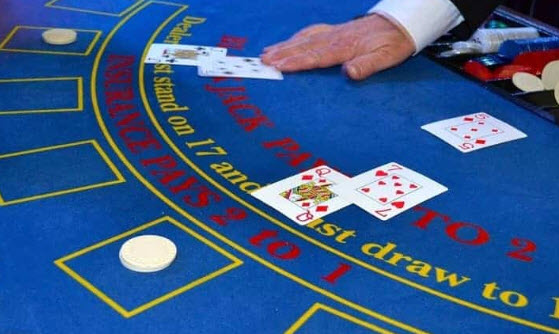
Casino Advantage in Blackjack
Review on Casino Advantage in Blackjack One notion that has always been in the mind of the casino operators is that the house has the exclusive ownership of all the money brought by the players. Of course this might probably … Read more
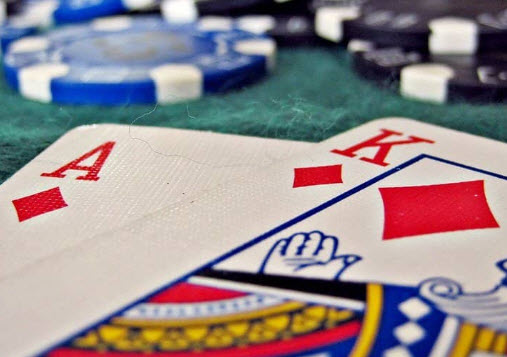
Live Merchant Blackjack
Strengths & Weaknesses of Live Merchant Blackjack A review which presents information’s on Deviations in Real-time Merchant Blackjack Precepts, illustration of methods which live merchant blackjack stand apart to games subject to RNG, Side Stakes Across Real-time Blackjack & Positives … Read more
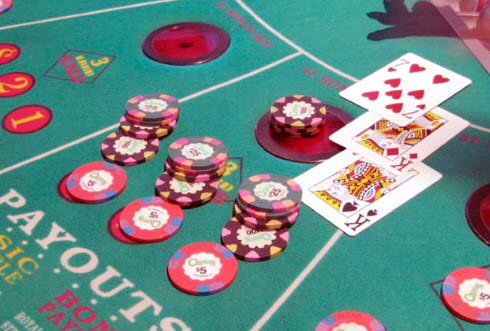
Blackjack Side Bets
Complete Review on Blackjack Side bets For the past few years, the brick and mortar games already ensured the introduction of side bets to the blackjack tables, this is done just to ensure the players are attracted. As there are … Read more

Blackjack Insurance
Comprehensive Guide on Blackjack Insurance Currently, there are various types of insurance that you can buy, it can probably be car insurance, health insurance, property insurance, liability insurance, and travel insurance. There are some insurance that you can even get … Read more
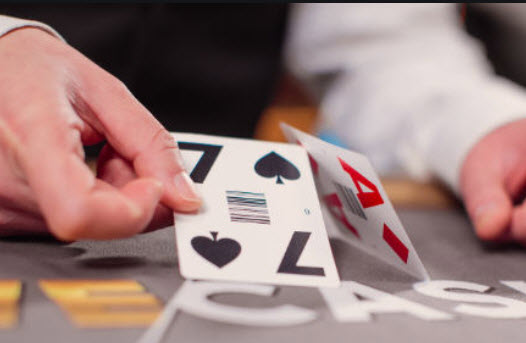
Live Blackjack Games
Overview of Live Blackjack Games & Selecting Blackjack Casinos A review which presents information’s on basic rules of Blackjack games, other essential terms like soft, hard hands, categories of Blackjack like Double Exposure, perfect pairs, Pontoon, how to select a … Read more

Blackjack
BLACKJACK GAME Blackjack is a both land-based and online-based game with variois varieties such as double exposure, switch, Vegas strip, Spanish 21, multi-hand, pontoon, and Atlantic City. It is a game based on odds and probabilities with dealer option. About … Read more
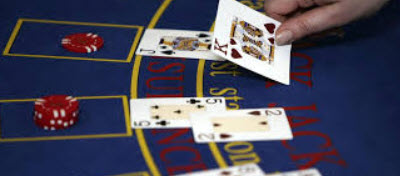
Blackjack Odds and Probabilities
OVERVIEW OF BLACKJACK ODDS AND PROBABILITY Blackjack is a deceptive game that employs the use of mathematical approach to determine the likelihood of winning or losing. This strategy was published in 1932 by Edward Thorp in a book called “Beat … Read more
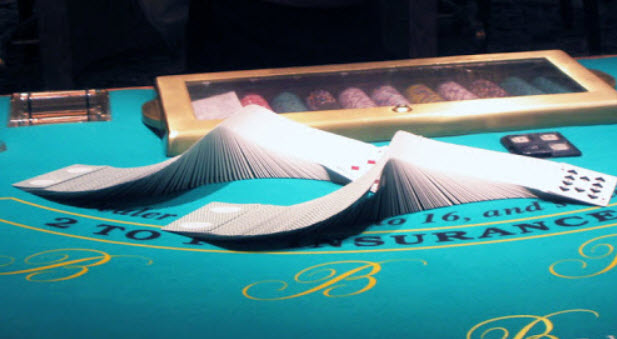
Blackjack Tricks and Tips
The Detailed Guide on Blackjack Tricks and Tips The majority of the rookies do experience intimidation on their first time of getting to a blackjack table. Even with the anxiety, most people seem to know what they are doing, let … Read more
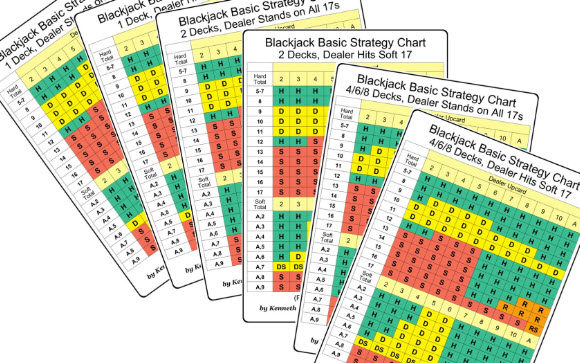
Blackjack Basic Strategy
Overview of Blackjack Basic Strategy A review which presents information’s on meaning of Blackjack Basic Strategy & Explanations on the mechanism behind operation of Blackjack Basic Strategy, Interpreting the idea of the Basic Strategy illustration, relevant Play decisions in Basic … Read more
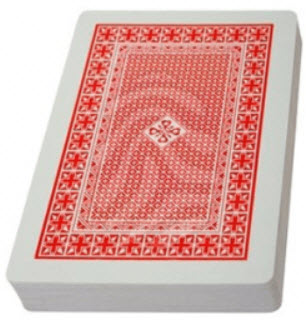
Single Deck Blackjack
OVERVIEW OF SINGLE DECK BLACKJACK Single Deck Blackjack, is one of the variations of blackjack. This blackjack variant has a hit soft of 17s with a payout of ration 3:2. About Single Deck Blackjack: There are several variations of blackjack … Read more
